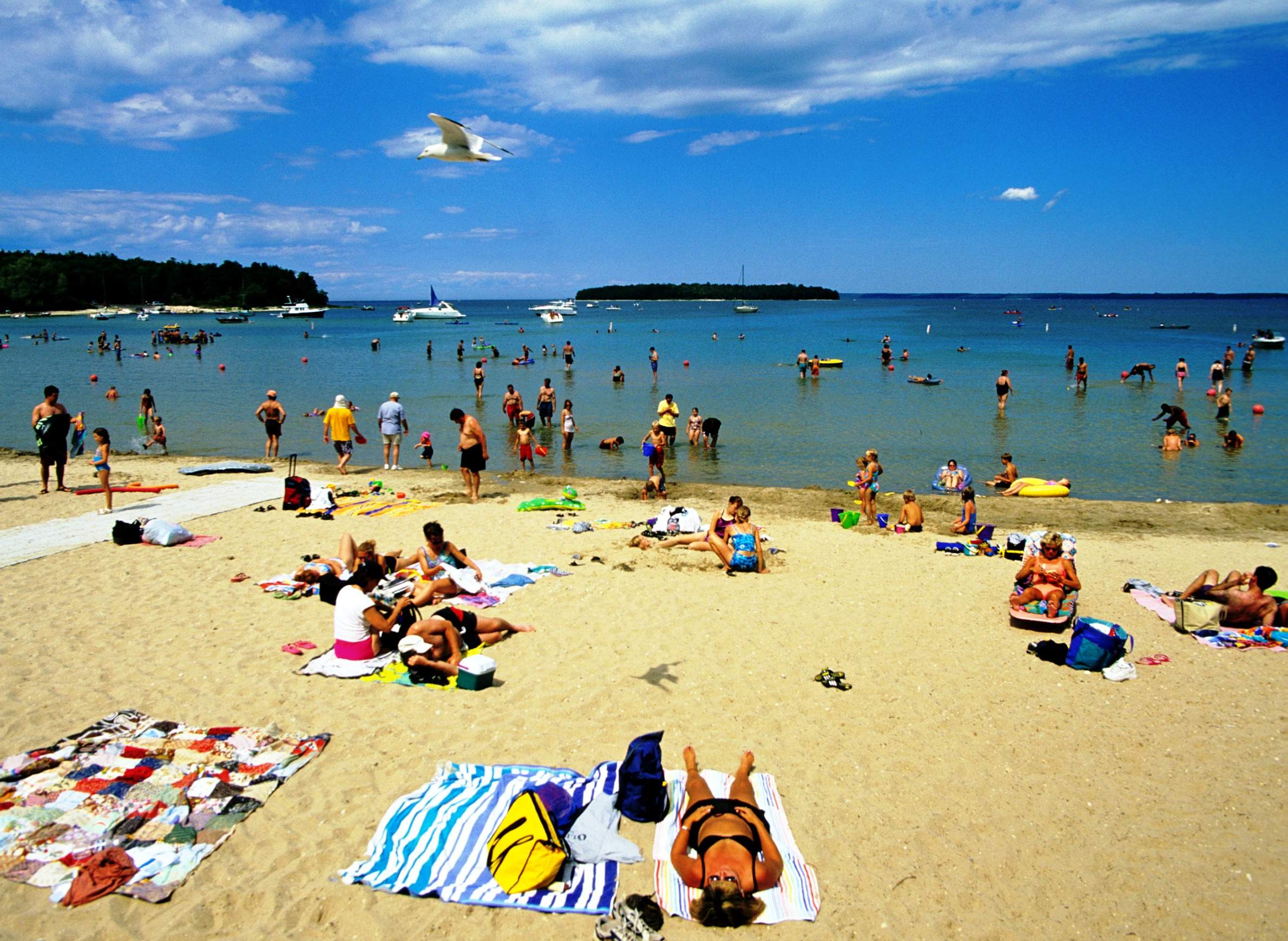
A beach near Sturgeon Bay in Door County draws a crowd on a sunny summer day.

A beach near Sturgeon Bay in Door County draws a crowd on a sunny summer day.
Whether along the shores of Lake Michigan or among smaller inland lakes around much of Wisconsin, no one in the state is really all that far from a beach. The fact that Wisconsin's beaches are usable for only a few months out of the year only increases the urgency of enjoying them — and thoughtfully maintaining their condition.
Testing the water off of Wisconsin beaches for Escherichia coli bacteria is one of the key protocols for keeping swimmers safe under the state's beach monitoring requirements. The Wisconsin Department of Natural Resources conducts beach water quality monitoring, as do county health agencies. Officials begin testing water a week before swimming season begins at beaches. Depending on how high-priority its water quality concerns are, a beach might be monitored as often as five times per week.
University of Wisconsin-Oshkosh professor of environmental engineering technology Greg Kleinheinz discussed why beach monitoring works the way it does in a July 27, 2015 talk at the Crossroads at Big Creek learning center in Sturgeon Bay, part of the Northern Lights Tour presented by the Wednesday Nite @ the Lab lecture series at the University of Wisconsin-Madison. Recorded for Wisconsin Public Television's University Place, his talk also covered the role Wisconsin has played in developing environmental practices for keeping swimmers safe from illnesses.
Kleinheinz, a Wisconsin native, got into some of the finer points of the fecal contamination that creates health concerns at beaches, emphasizing the importance of having a sense of humor about such an unappealing issue. He also offered a broader perspective on why people go to the effort of monitoring beach water quality and warning swimmers about conditions, namely, the economic and social impact of these popular gathering places.
Door County is home to many of Wisconsin's beaches, and Kleinheinz focused on their role at this vacation destination. He detailed how the redesign of a beach in Egg Harbor was used to both improve water quality — the beach was engineered to provide natural filtration through layers of sand and gravel — and expand its accessibility. And while Wisconsin's beaches have their share to water-quality concerns, Kleinheinz voiced optimism about the condition of the state's shoreline swimming areas.
Key facts
Key quotes